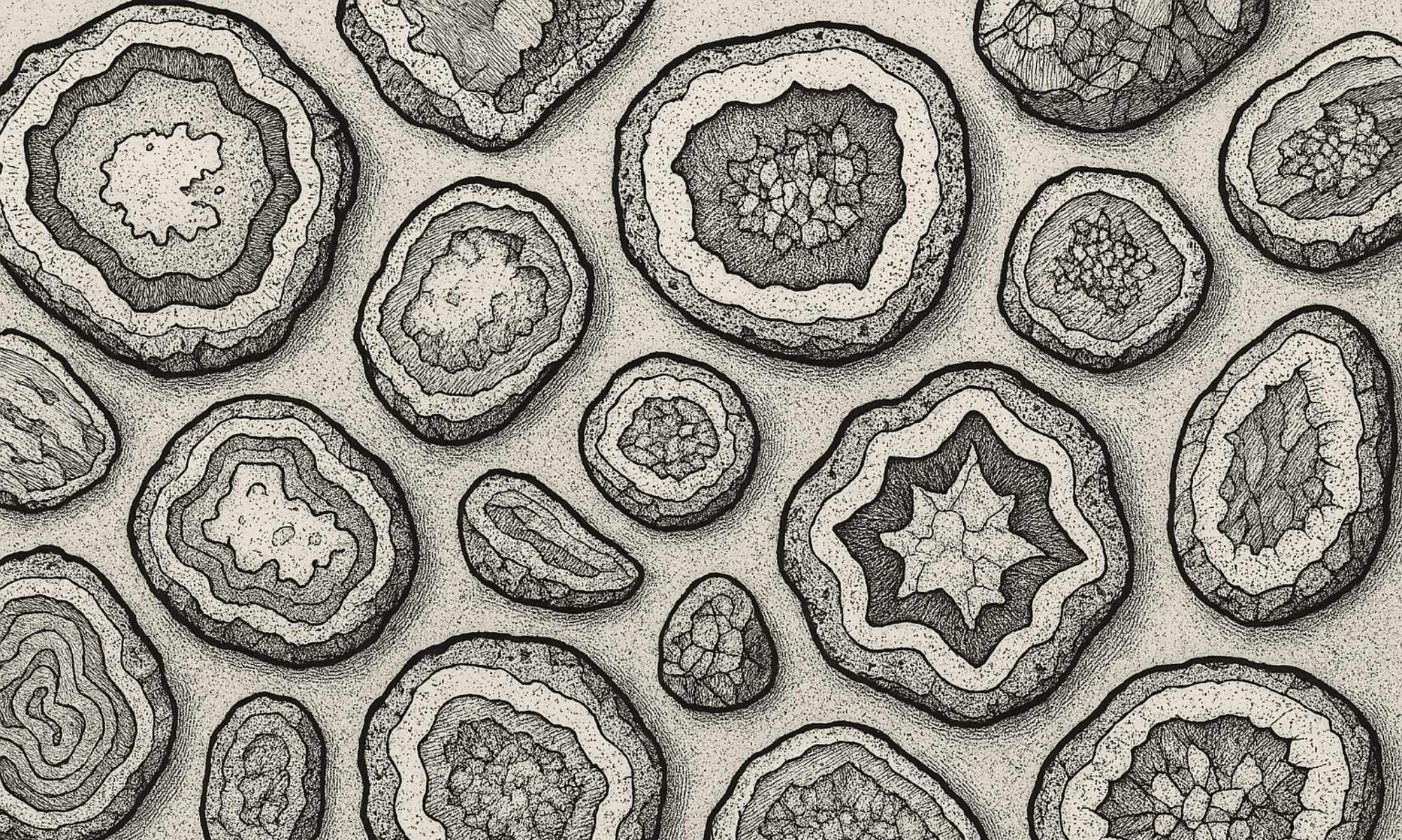Asian Thundereggs: Hidden Gems from the Eastern Hemisphere
When most rockhounds think of thundereggs, their minds jump straight to the Pacific Northwest—but did you know some of the world’s most unique and collectible thundereggs come from Asia?
These lesser-known volcanic nodules are turning heads in the lapidary world thanks to their wild interiors, rich colors, and unusual formations. Whether you’re a collector or cutter, Asian thundereggs deserve a closer look.
What Makes Asian Thundereggs Different?
Like their American cousins, Asian thundereggs form in rhyolitic lava through a slow process of mineral-rich fluids filling gas pockets and fractures. What sets them apart is the style of the agate and matrix:
- Chinese thundereggs (especially from Guangdong and Zhejiang Provinces) often feature striking white, gray, or lavender agate, frequently with orbicular or plume structures.
- Indonesian thundereggs, particularly from Java, are rich in contrasting colors—think black-and-red, yellow-with-green, or brecciated jasper formations.
- Mongolian thundereggs tend to have quieter color palettes but fascinating internal geometry—perfect for slicing and polish display.
- Iranian or Turkish nodules (sometimes loosely referred to as thundereggs) can include high-contrast banding and intricate chalcedony formations, although not all are “true” thundereggs in structure.
What collectors love most is that you often get vivid contrast between the rough volcanic outer shell and the dramatic surprise hidden inside.
How Rare Are They?
Asian thundereggs are rarer on the international market compared to their U.S. or German counterparts. Many are collected by locals or traded in smaller regional markets. Export regulations, mining access, and sheer geographic remoteness keep them relatively scarce—which only adds to their appeal for collectors looking for something off the beaten path.
Lapidary Potential
If you’re cutting Asian thundereggs, be prepared for variety. Some have dense, jaspery centers that polish beautifully. Others may have fine fortification agate or even druzy quartz voids. A single batch can contain wildly different material, so each cut is a gamble—in the best way.
Some thundereggs from Indonesia and China also show signs of opalization or silicified plant structures, adding a whole new layer of mystery and beauty.
Tips for Collectors
- Check provenance – Many specimens are misidentified or mislabeled, especially on auction sites. Try to buy from dealers who know the source.
- Test cut a few small ones first – Some may look promising on the outside but lack good color inside.
- Preserve whole examples – Some of the matrix patterns and natural exterior textures are just as collectible as cut surfaces.
Why They’re Worth Watching
Asian thundereggs are still something of a “sleeper” category in the lapidary world. Prices remain reasonable compared to Oregon or New Mexico material, but the quality is often stunning—and increasingly sought after by collectors who want something different.
With more international trading and exploration, new beds may continue to surface. Until then, these rocks remain one of the most underrated gems in the thunderegg world.
